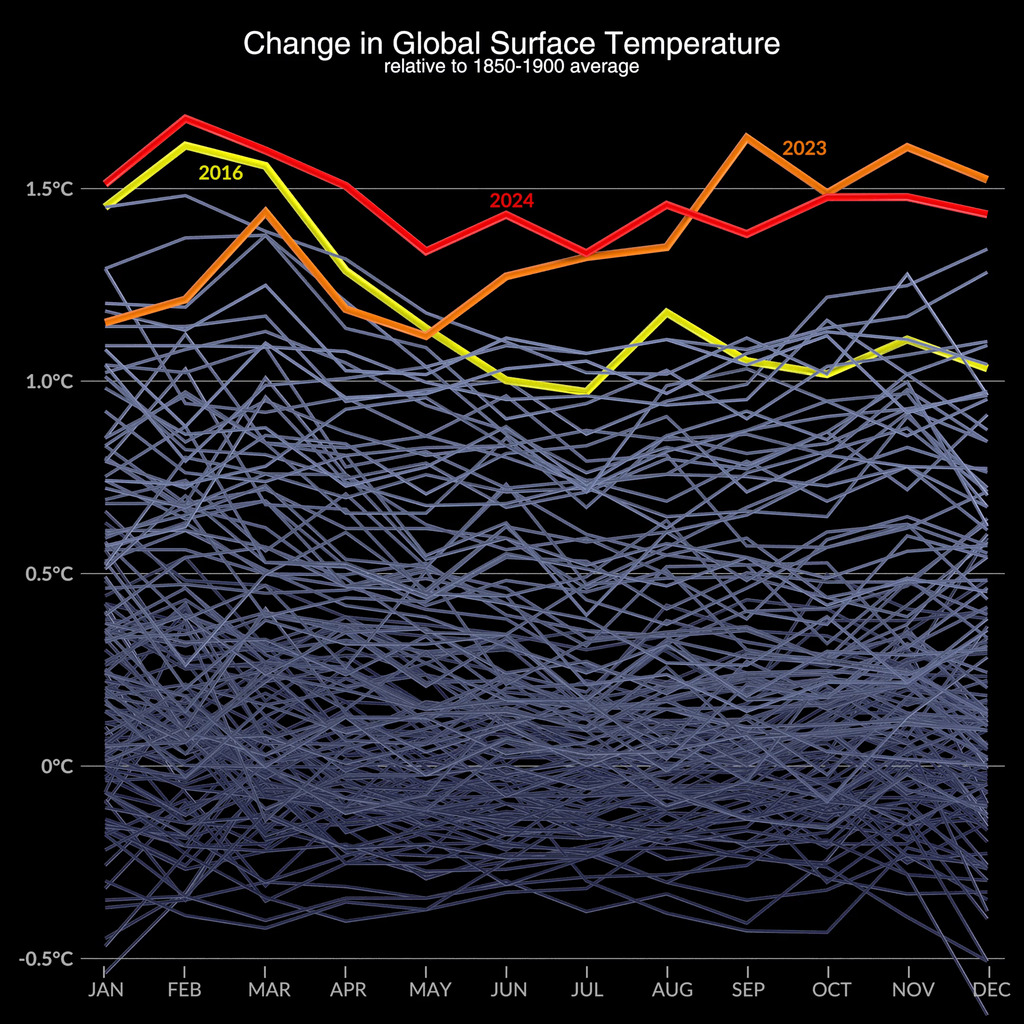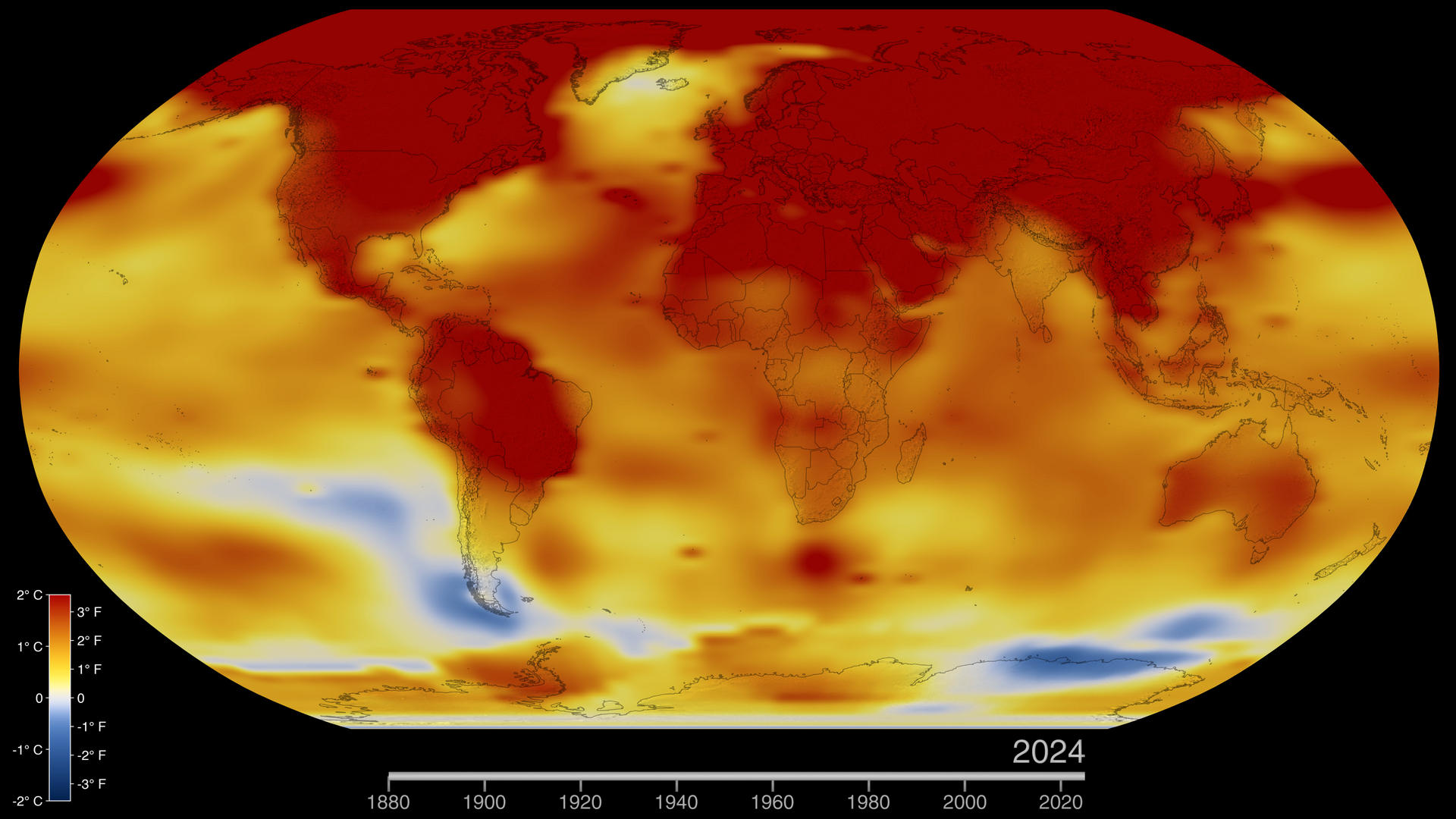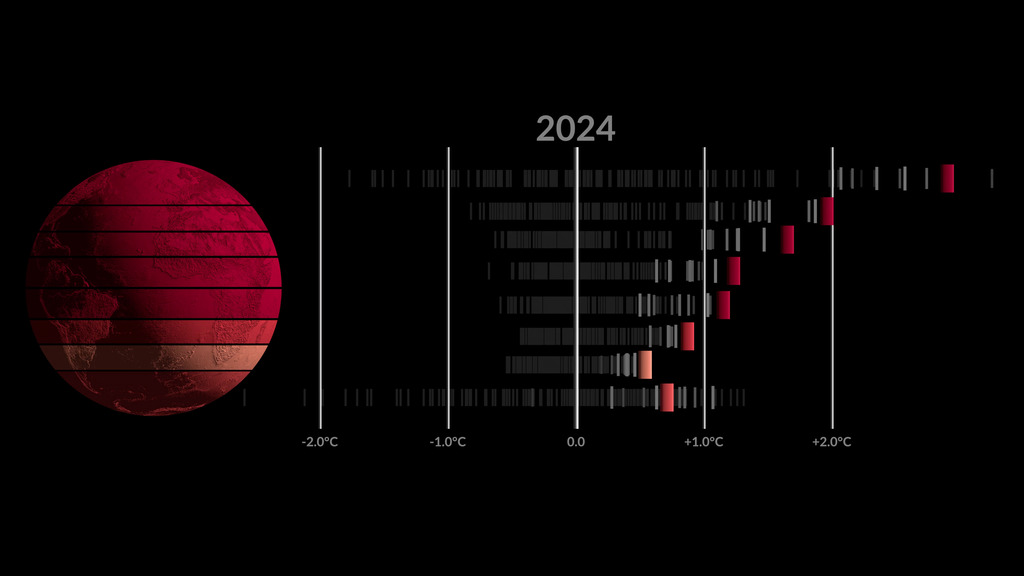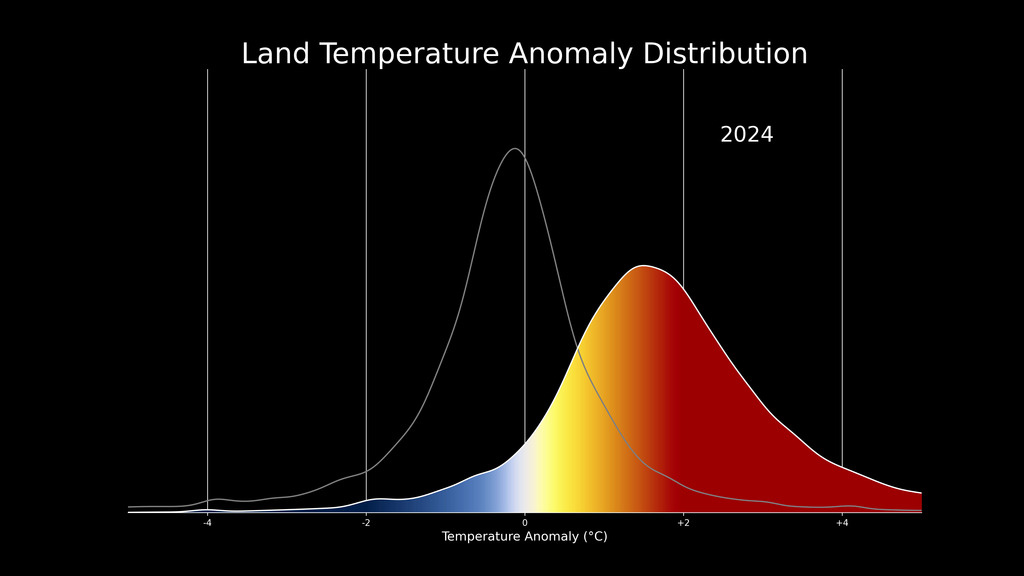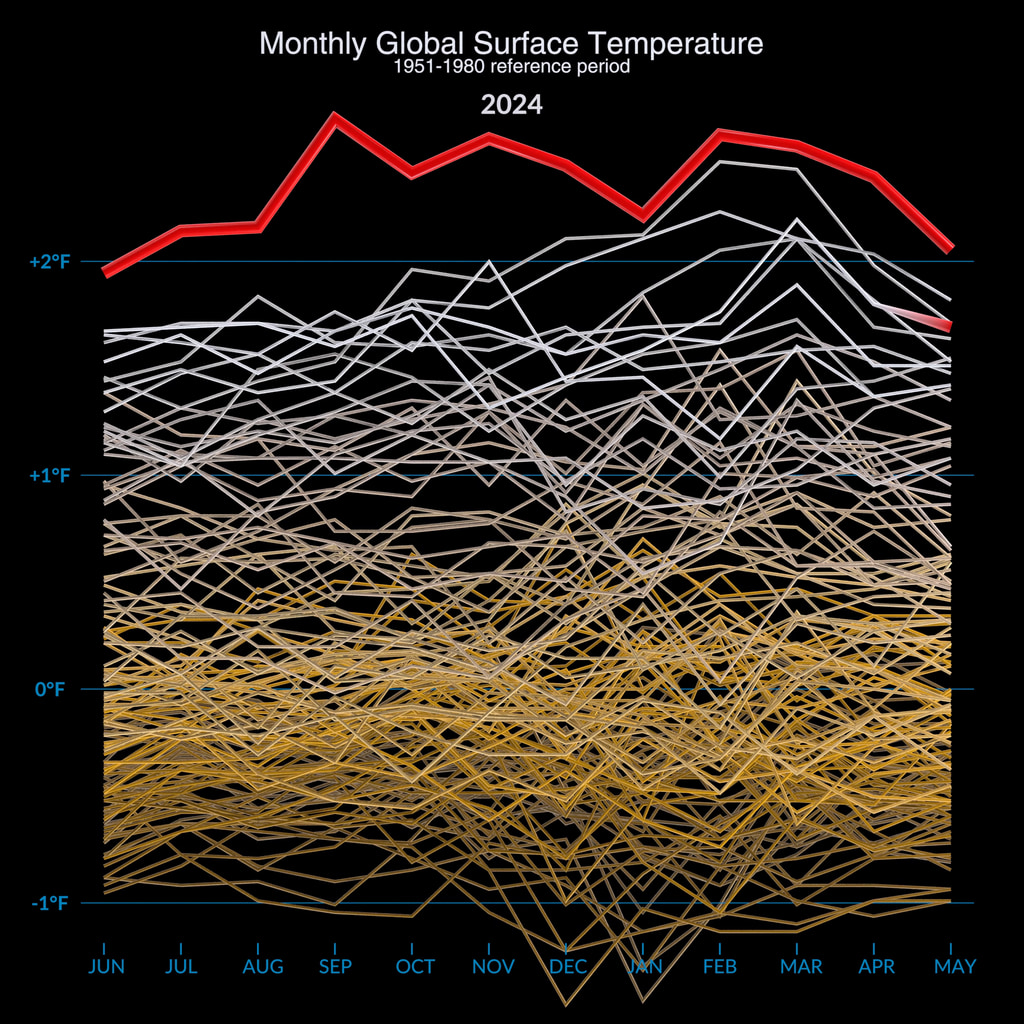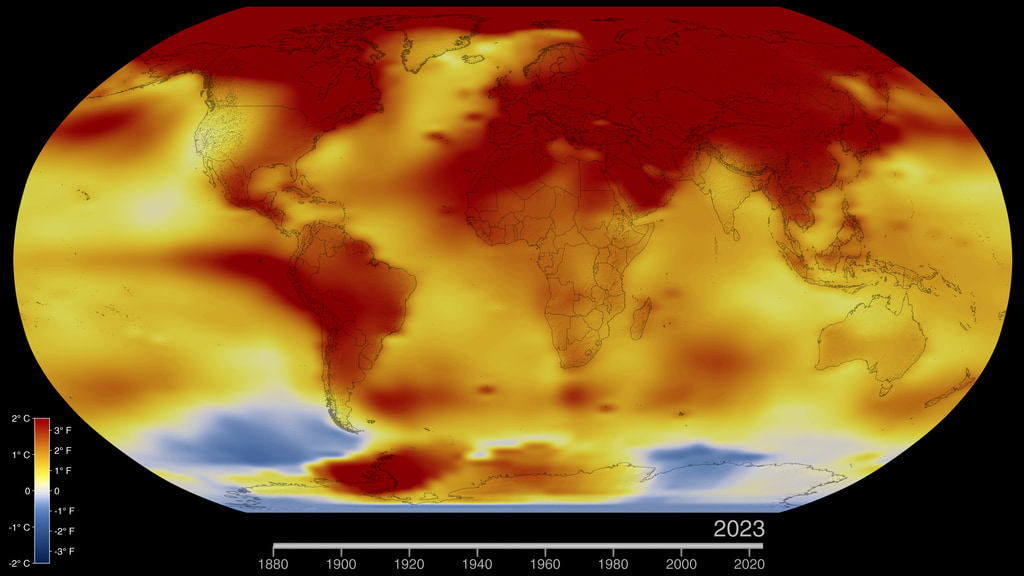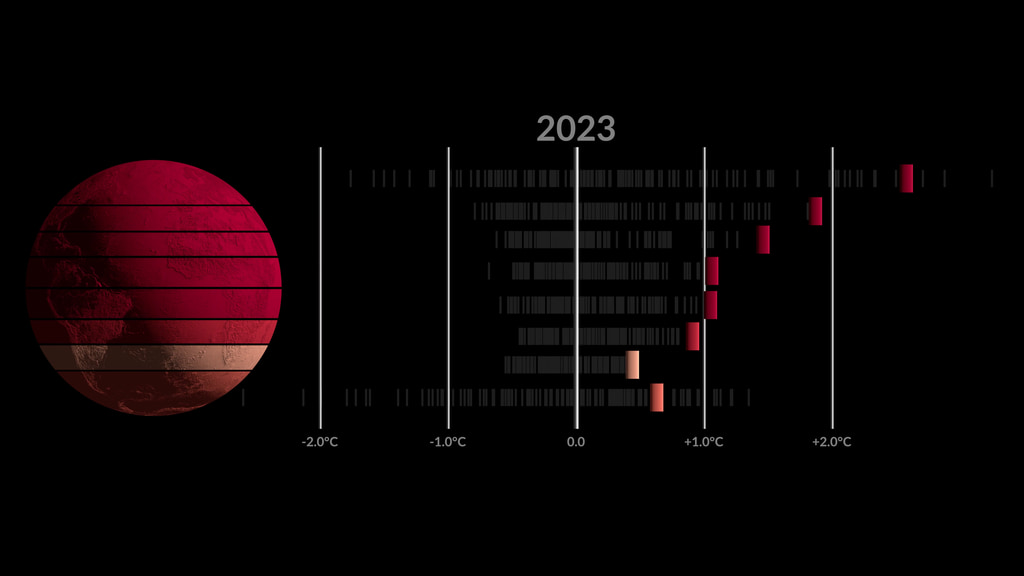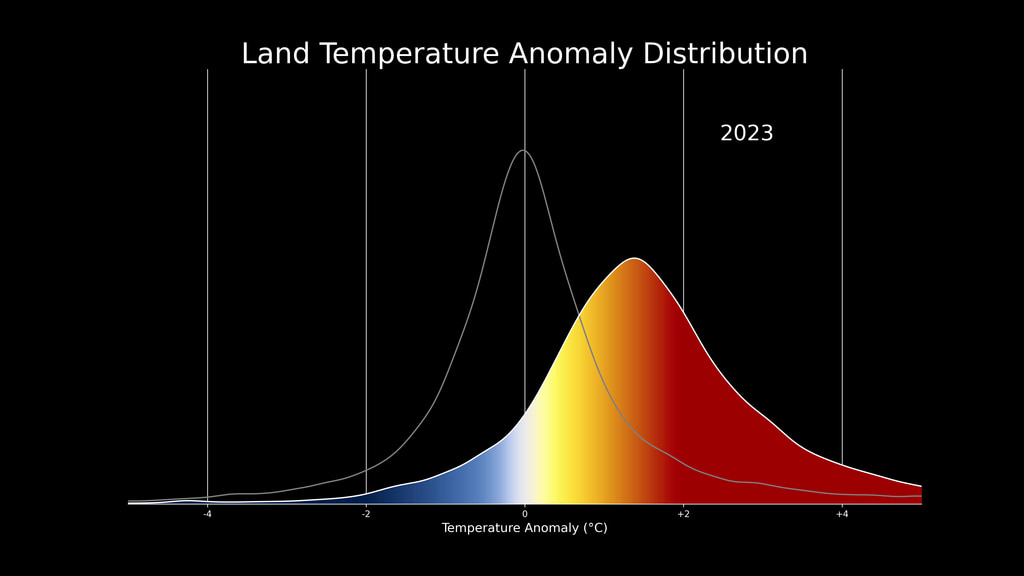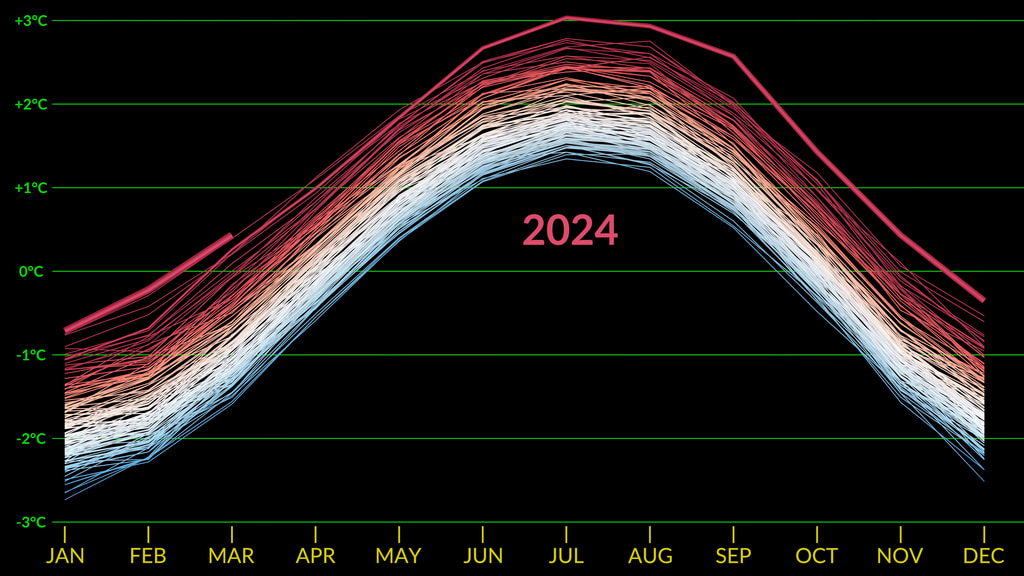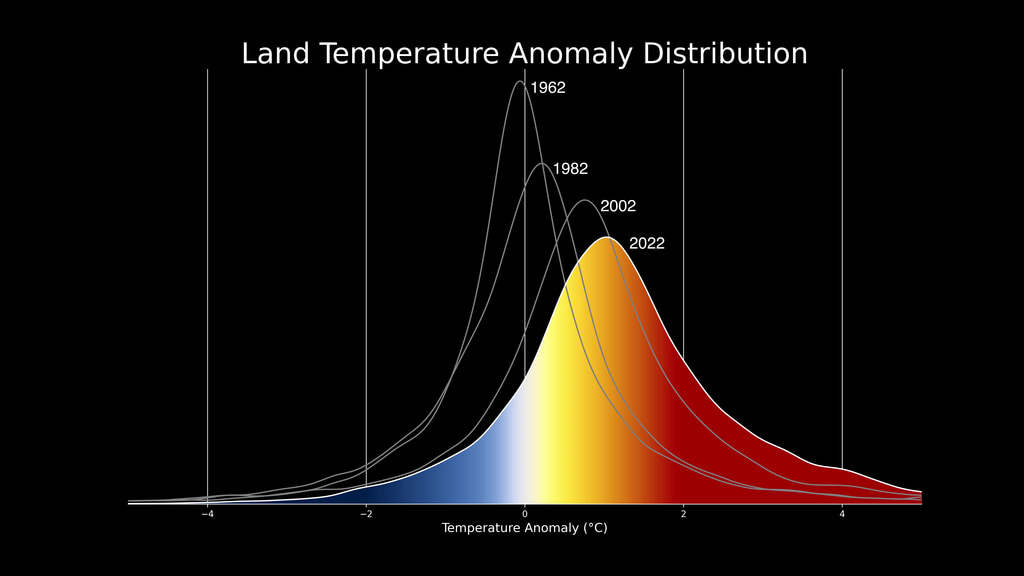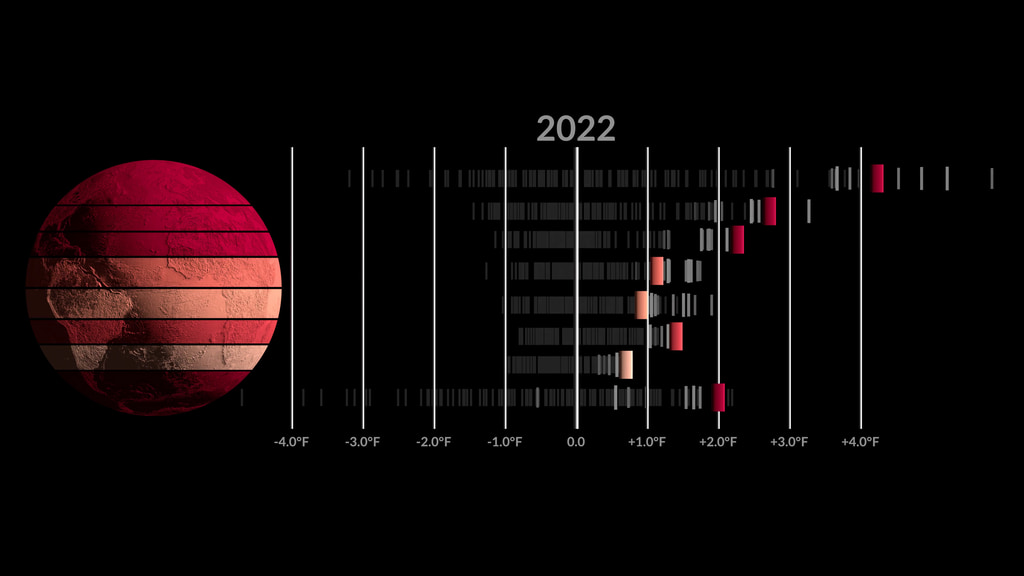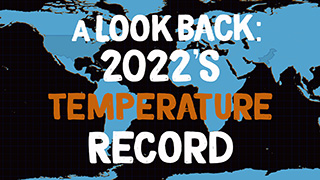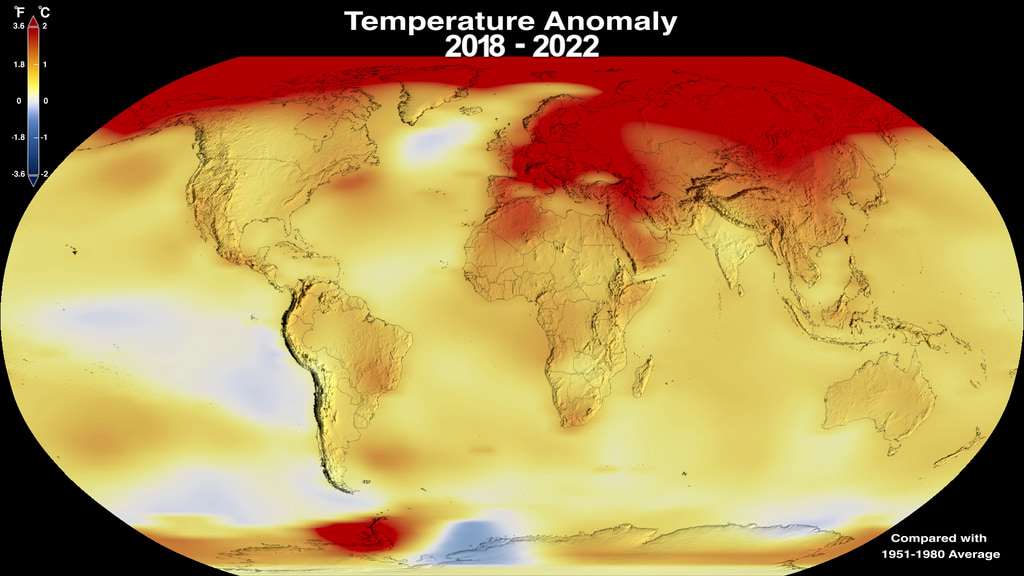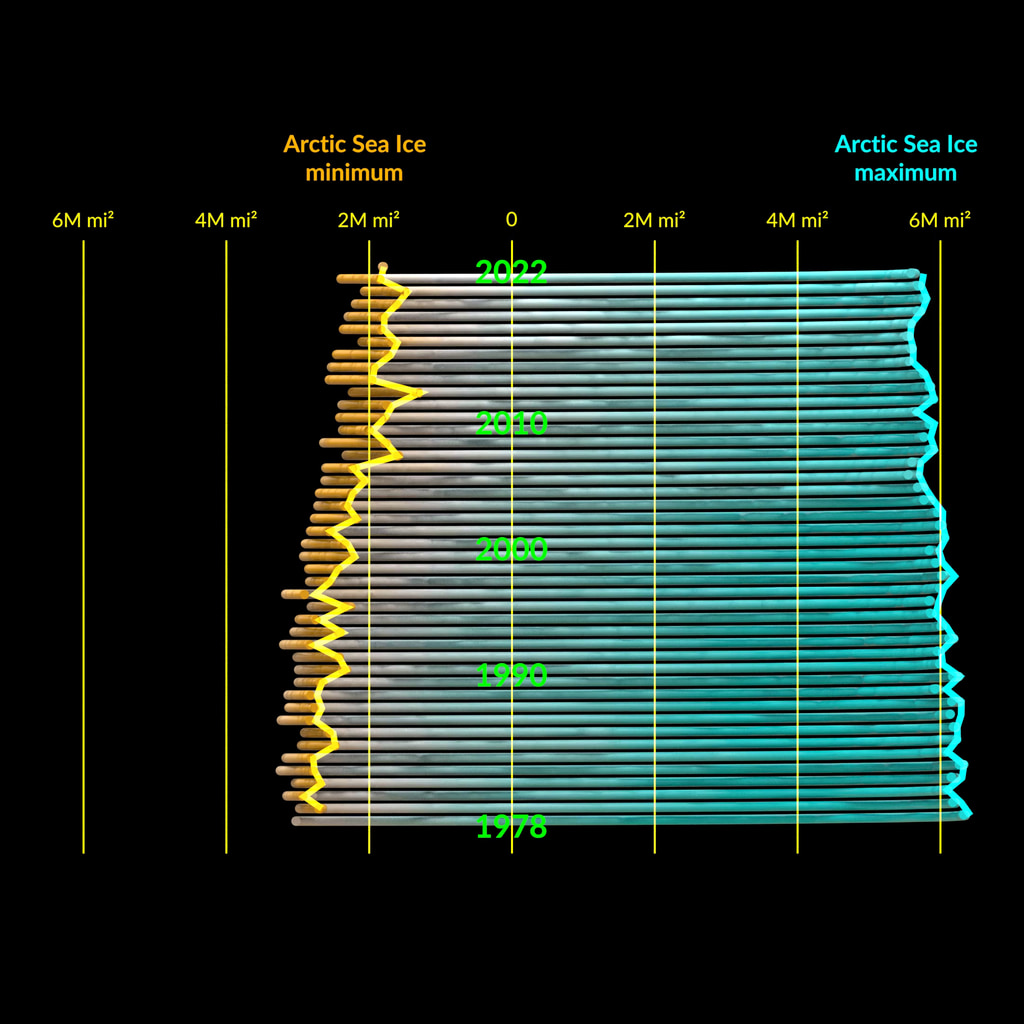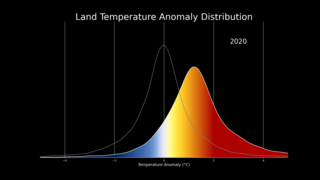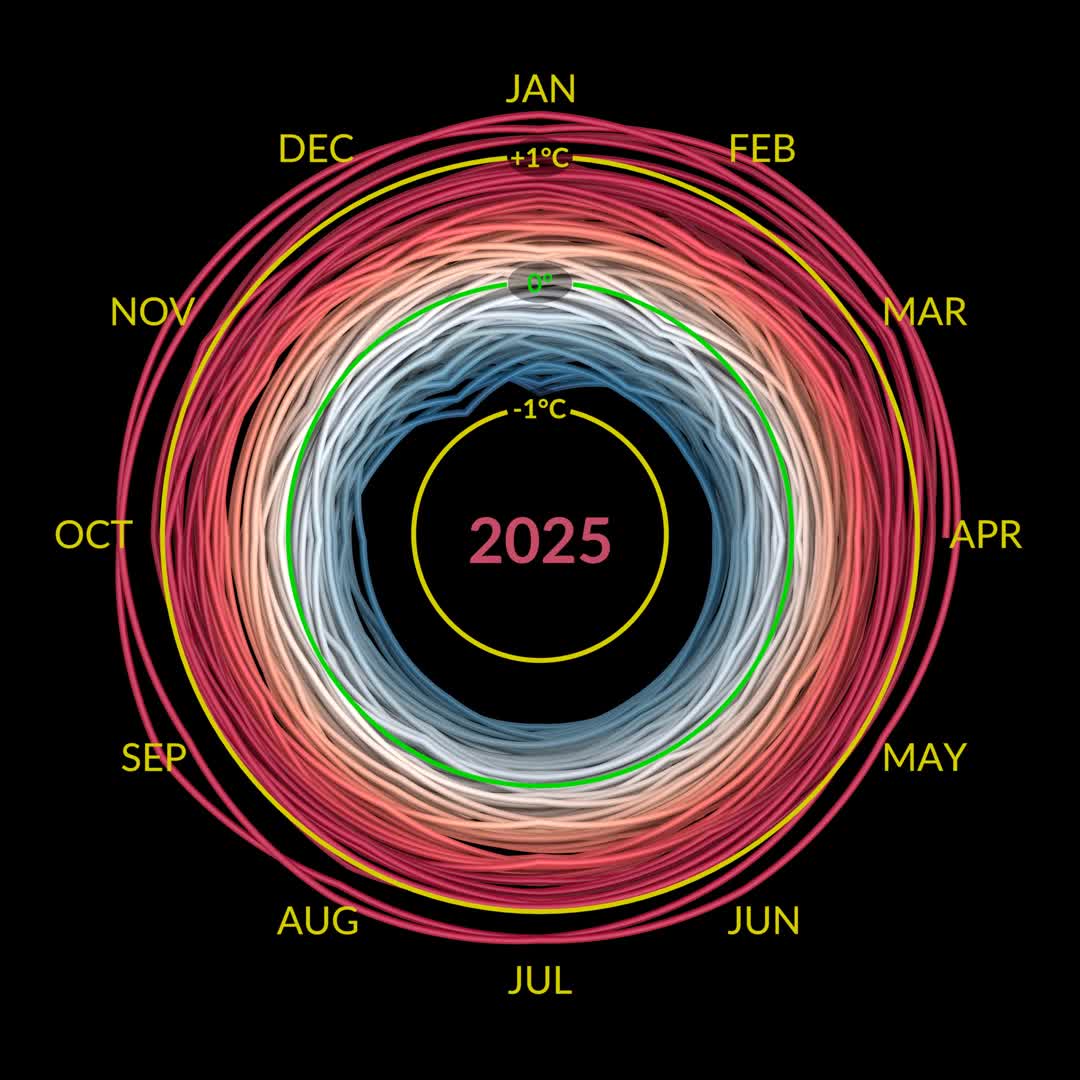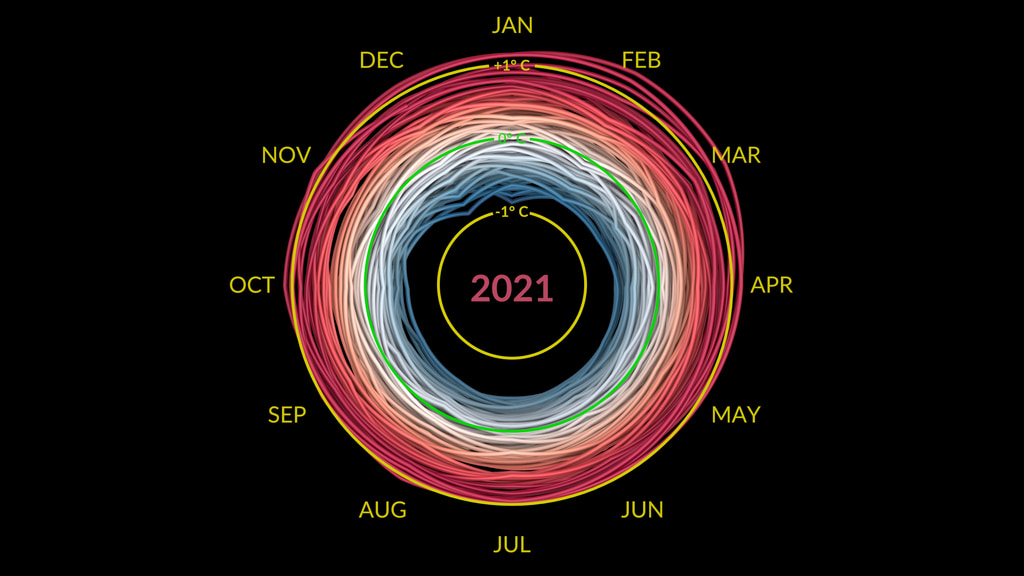A newer version of this visualization is available.
NASA Climate Spiral 1880-2022
The NASA climate spiral 1880-2022. This version is in Celsius; see below for an alternate version in Fahrenheit. Both a 30 fps, 60 second duration video and 60 fps, 30 second duration video are available.
The visualization presents monthly global temperature anomalies between the years 1880-2022. Temperature anomalies are deviations from a long term global avergage. In this case the period 1951-1980 is used to define the baseline for the anomaly. These temperatures are based on the GISS Surface Temperature Analysis (GISTEMP v4), an estimate of global surface temperature change. The data file used to create this visualization is publically accessible here.
The term 'climate spiral' describes an animated radial plot of global temperatures. Climate scientist Ed Hawkins from the National Centre for Atmospheric Science, University of Reading popularized this style of visualization in 2016.
The Goddard Institute of Space Studies (GISS) is a NASA laboratory managed by the Earth Sciences Division of the agency’s Goddard Space Flight Center in Greenbelt, Maryland. The laboratory is affiliated with Columbia University’s Earth Institute and School of Engineering and Applied Science in New York.
The NASA climate spiral 1880-2022. This version is in Fahrenheit; see above for an alternate version in Celsius. Both a 30 fps, 60 second duration video and 60 fps, 30 second duration video are available.
Credits
Please give credit for this item to:
NASA's Scientific Visualization Studio
-
Visualizers
-
Mark SubbaRao
(NASA/GSFC)
-
Ed Hawkins
(National Centre for Atmospheric Science, University of Reading)
-
Mark SubbaRao
(NASA/GSFC)
-
Technical support
- Laurence Schuler (ADNET Systems, Inc.)
- Ian Jones (ADNET Systems, Inc.)
-
Web administrator
- Ella Kaplan (Global Science and Technology, Inc.)
Datasets used
-
GISTEMP [GISS Surface Temperature Analysis (GISTEMP)]
ID: 585The GISS Surface Temperature Analysis version 4 (GISTEMP v4) is an estimate of global surface temperature change. Graphs and tables are updated around the middle of every month using current data files from NOAA GHCN v4 (meteorological stations) and ERSST v5 (ocean areas), combined as described in our publications Hansen et al. (2010), Lenssen et al. (2019), and Lenssen et al. (2024).
Credit: Lenssen, N., G.A. Schmidt, M. Hendrickson, P. Jacobs, M. Menne, and R. Ruedy, 2024: A GISTEMPv4 observational uncertainty ensemble. J. Geophys. Res. Atmos., 129, no. 17, e2023JD040179, doi:10.1029/2023JD040179.
This dataset can be found at: https://data.giss.nasa.gov/gistemp/
See all pages that use this dataset
Note: While we identify the data sets used on this page, we do not store any further details, nor the data sets themselves on our site.
Release date
This page was originally published on Thursday, January 12, 2023.
This page was last updated on Sunday, March 16, 2025 at 10:57 PM EDT.
